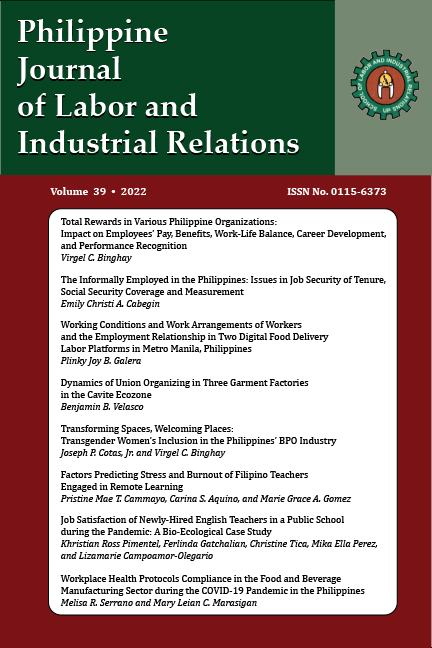Factors Predicting Stress and Burnout of Filipino Teachers Engaged in Remote Learning
Abstract
This study explores the different factors that predict stress and burnout in 219 Filipino online teachers during the COVID-19 pandemic. Filipino workers are noted to have the highest stressors in Southeast Asia according to the 2022 Gallup Survey. This research is deemed relevant since the International Labour Organization’s Declaration on Fundamental Principles and Rights at Work (2022) states that all member states must have a safe and healthy working environment for all workers. Further, the high workload demands of teachers are also said to be contributory to the country’s Learning Poverty Index. Given this, Philippine education officials should focus on the safety and health of Filipino teachers by addressing their stress and burnout issues. Several findings of this study give support to the literature on teacher burnout and working conditions. Specifically, results showed that on average, each teacher works 12.17 hours a day, handles five classes, and teaches 141 students. These contribute to very high stress and high emotional exhaustion, moderate depersonalization, and moderate personal accomplishment. It was revealed that factors of gender, educational attainment, educational stage of teaching, type of school, province, work setup, age, and years in teaching interplay with stress and burnout.


